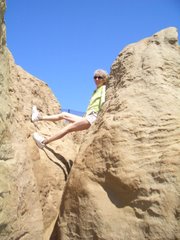
EGBERT Ch. 5. Creativity and ProductivityRICHARDSON Ch. 4. Wikis: Easy Collaboration for All
Popular second language acquisition theories stress the importance of "comprehensible input." While most agree this is important, many others argue we also need to focus on output as well. What are some ideas you gained from the Egbert chapter about how technology can be used to encourage creativity and production? How does this help promote language learning? Share any experiences you've had with any of these or similiar ideas in language learning classrooms. Finally, comment on the potential of Wikis to allow language learners to collaborate in creative and productive ways.
Popular second language acquisition theories stress the importance of "comprehensible input." While most agree this is important, many others argue we also need to focus on output as well. What are some ideas you gained from the Egbert chapter about how technology can be used to encourage creativity and production? How does this help promote language learning? Share any experiences you've had with any of these or similiar ideas in language learning classrooms. Finally, comment on the potential of Wikis to allow language learners to collaborate in creative and productive ways.
Although it is useful to divide input from output for analytical purposes, let's not forget how much input is necessary before expecting output in L2. Depending on the desired output, input in a way that is enlivening and interesting (my philosophy of teaching is "edutainment") can be enhanced by technology. However, technology cannot do the job alone, without the guidance of a human brain adapting the media to the needs of the students, if applicable. Egbert also emphasizes that production alone or the availability of tools does not result in language learning. Teachers must adapt activities and tools to meet language learning objectives.
What can happen when students are allowed to work on their own with creative tools? Oftentimes they tend, in social situations, to turn to L1, and the teacher assumes the role of "Sprachpolizist"--the Language Policeman. Thus, motivation to use L2 in group exercises must be part of the kick-off activities. Creativity in L2 production might include charades if a concept in L2 is not recognized, a dictionary search (this is a potential WIKI application), or use of Google/Yahoo images to explain a concept, and role playing of authentic tasks, such as shopping or ordering in restaurants. In my experience, teacher authority and class control is of the essence in keeping the learners in L2 as much as possible.
WIKIs are a great way of documenting new learning. Imagine a homework assignment in which new vocabulary words are listed and defined by different groups in the class, and corrections to spelling or grammar made collaboratively. The teacher can "look in" on the production, and know what needs to be clarified in the next class. The concepts discussed come alive with photos, sounds, and videos. The learners would easily repeat and acquire new vocabulary, and see it in (sometimes unforgettable) context. This multi-media approach stimulates visual and auditory input and output!


2 comments:
I couldn't agree with you more. I think a combination of your thoughts and Michael's comments on reading reflection number 4 are really where it's at for us teachers. Technology affords us a wonderful tool to facilitate both input and output for our students that can be ten times more effective and useful than hour after hour of drill and practice.
Off the subject. How did you get your RSS link to blogline? Thanks.
Michael
Post a Comment